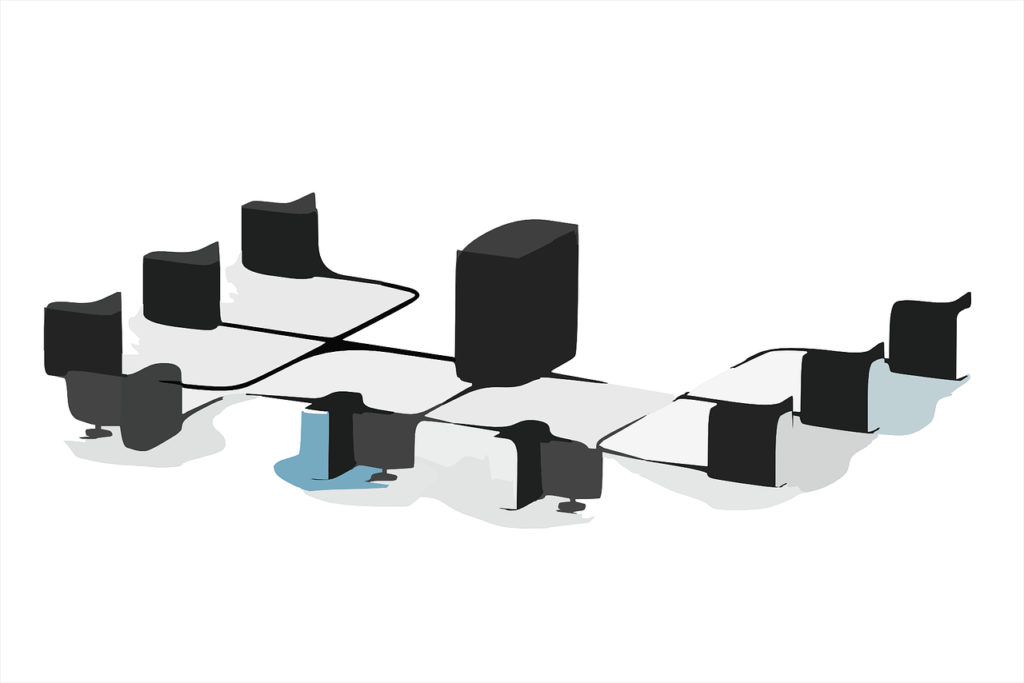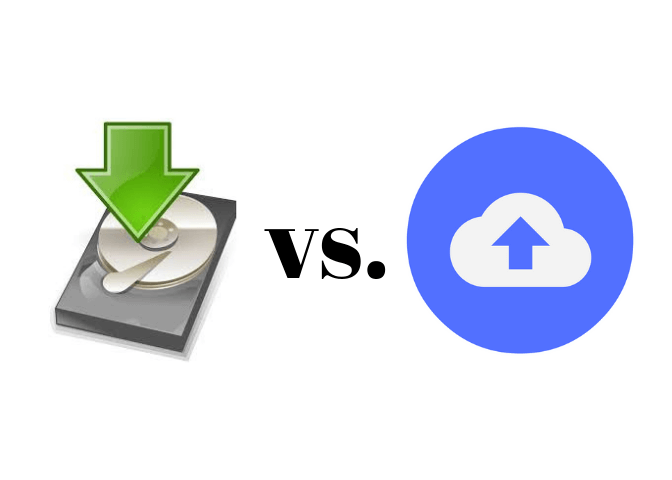Guide to torrenting: from beginner to proficient user
Would you like to dive into the fascinating world of torrenting? We are here for you to make the journey pleasant and explain you all the essentials, as well as the tips ‘n’ tricks along the way, to take you from whatever level of proficiency you are to the ultimate torrent user.
We are a group of friends who share the same passion for liberal information and data distribution in the virtual world and, from the first moment we stumbled upon torrents, we fell in love. We want to share this keen attitude with you and provide you with all the knowledge wisdom on how to do torrents efficiently and securely. Since there is a relatively new market of the cloud torrenting services overgrowing today, we also took the time to test, compare and review them, so you can make an informed choice in the case you decide to make your torrenting top level.
Get into the torrent
Let us start our adventure into the world of data flow with basic definitions so we can meet on the common ground. Torrents are simply a way to distribute files. But not just any way, but the next level powerful community-driven way that is the future of data sharing across the web and the task of ours to make it an even more prevalent present.
Torrent files are the game changer in so many ways. The most profound one being the BitTorrent protocol which decentralises the distribution by not storing one file on a central server to which the client connects, sends a request and downloads but by enabling the file to be split into many smaller pieces scattered among the so-called swarm. That is the sum of all small computers (servers/clients at the same time) being interconnected, named peer-to-peer network (P2P). Each can provide the file to others to download, called seeder or seed and when it requests the download of the part (or all of them from peers of the swarm) its called leecher, or leech.
That way the data are fragmented into a .torrent file which is simply a list of IP addresses of particular PCs that contain the desired file in the distributed network. This core principle provides the foundation for much faster and secure data transfer because it leaves out the idea of one central entity which stores the whole file. This compromises the security since the owner of the server has the sovereignty over the content as well as speed. By enabling everyone to be part of the network, the higher the number of users participates in it, the larger amount of copies is created; hence the need for one chunky storage is omitted, simultaneously creating faster transfer speeds when more peers are seeding. So the P2P is esp. excellent to share large files. Plus the leech only needs to assemble the whole file by grabbing every fragment spread across different leechers which alleviates the bandwidth.
Stay private and respect the copyright
On the other hand, when you are leeching a file, and the amount of seeds is high, your download speed gets ultrafast which may put an extensive load on your bandwidth which irritates your ISP who then might restrict your speed when it finds out you are using torrents or even block the service. Therefore many torrenters started using VPNs (Virtual Private Network) to change their IP and encrypt the traffic and stop their IP from being associated with torrents. But the story evolves as some ISPs even detect that you are using VPN and might disallow even that.
This creates a massive discussion on the net, contributing to the topic of anonymity and freedom of speech and data sharing, which is so crucial for the glory of the world wide web, right?
Nonetheless, another issue with the torrents is pregnant. Of course that a crazy lot amount of people, because of the significant advantages of the torrent network, started to use it to distribute pirated content. This put torrenting under the scrutiny of anti-piracy agencies, DMCA and the law and gave the whole thing a very bad omen. But in fact, torrents have many legitimate uses, like downloading the latest release of open-source software or public domain files.
Therefore, remember, a torrent is just a tool, a method of sharing digital content. In and of itself, it is technically legal, but you need to have the content owners permission. What kind of content you are sharing is your full responsibility. Please do this consciously.
Disclaimer: Torrentcompare.com and each of us individually stand firmly for the right for privacy and copyright. We DO NOT support piracy of any kind. We ARE NOT promoting or advocating any distribution of copyright-protected material, be it via torrents or any means at all. Please do recognise the property rights of owners, as well as you would like yours to be recognised. Breaking the copyright terms is punishable by law. Make using torrents responsibly your high priority and always abide by the laws of the country of your residence.
How to set up the torrent process
First, what you need to do so as to start using torrents is to install a desktop BitTorrent client, the software that enables you to share files on your PC with other BitTorrent users to participate in the content distribution. There are many to choose from, the most famous being qBittorrent, Transmission or Vuze. They come with various feats: e.g. handy plugins, torrents prioritisation, web-based remote control, IP filtering, selective file download, torrents creation…
The point of this article is to direct you to the most amazing tools out there, and desktop clients are not the best choice for a pro, so we will not go into details of the multiple clients, you can read about those elsewhere on the web, if interested.
Specific details of the BitTorrent network
For the torrent file to stay alive, the peers need to seed it. When the seeds number drops to 0, you will be unable to download it at all. The more peers do seed it, the faster the download (depending on the number of leechers). So the critical factor of the viability of torrent and the speed of the network is the seed to leech ratio that says how many peers are uploading as opposed to downloading. The higher the first number, the better. So, the established etiquette, after downloading is to seed the file to others, at least for some time and the speed you (or your ISP) are comfortable with. The good manner is simply 1:1 seed to peer ratio. Meaning, you upload 100% of the file you leeched, e.g. when you downloaded 1 GB, you also give 1 GB to the network. Of course, this might eat up your uplink, but that is the fair way to give back to the community at least the same chunk you have bitten so it can perpetuate.
Another term we need to pinpoint is the tracker. A BitTorrent tracker is a piece of web software that acts as a central server coordinating the P2P data transfers among peers. Particularly, the tracker keeps a record of the network location of each client that uploads or downloads torrent. It also tracks which fragments of that file each peer holds to provide smooth data-sharing and the P2P network properly operational. So it is basically the communication regulator. There are two types of trackers, those that are public, so anyone can access them (search and download torrents; e.g. The Pirate Bay or isoHunt ), and the private ones. They’re choosing who to get in and require the potential user to be invited by another one and create an account so as to use the service. If you don’t know anyone like that, you need to go through an elaborate interview process to get an invite. Sharing invitations on the web is strictly prohibited. What is more, private trackers often have many regulations about how you can use the service. But the highly seeded files you are searching for are the goodies what you are after and worth the process. And they claim to have it all. Plus they are much more structured and focused on quality.
Get magnetic
When a .torrent file is downloaded, what you’re getting is a tiny file that contains info on the bigger file you need to download. Then that torrent file says to your torrent client the titles of these files being requested and an URL link of the tracker. The torrent client then computes a hash code, a code that only this torrent has—similar to a unique ISBN or catalogue number. Afterwards, the client uses the code to locate peers uploading these files so that you can leech those.
So the magnet link leaves out the middleman. It is basically a hyperlink with the torrent hash code, which your client can instantly utilise to start obtaining IPs seeding those files. Magnets don’t need a tracker, nor do they require the user to download any file before beginning the download. Convenient!
Speaking of convenient, our focus is on pro torrenting and that requires safety of privacy, in addition to convenience, so in this article, we will skip all the other anonymisers such as VPNs, Proxy servers, Tor or various privacy oriented browsers which are an extra step that the user must otherwise take care of.
So, without further delay, cyberladies and gents, let’s teleport right into the cloud – the today’s top solution for torrent processing that not only does all the work for you (!) but also provides you with a serious level of privacy, anonymity and security.
Cloud + Torrent = Happy (& Pro) User
Why cloud, you ask? In case you missed it, there is a massive wave that sweeps established services that are based on local datacentres and stores them in the public cloud instead. The universal purpose of any cloud migration is to host apps and data in the most effective IT environment possible, based on factors such as cost, performance and security hence delivering the end-user the smoothest experience ever.
So at first, notice the quintessential shift, literally. The cloud torrent service providers or just cloud torrent providers (CTP) do the heavy-duty download of BitTorrent materials in the cloud, instead of your machine, thus keeping your activities completely private. They are the ultimate terminatorrents :). Potential snoops and spies would not find your IP associated with the torrent files but rather one of their encrypted servers.
From those, you can either download the content directly the desired device or stream it right from the cloud, so the user simply gets direct access to the desired file, almost sweeping the whole torrenting thing out of the table. You can do the same thing with BitTorrent client because you don’t need one anymore. This is fully web-based technology. You only need to load the CTP with a torrent file (old school), or better with a magnet.
In an ABC, the CTP’s perks are:
- Anonymity
- Browser-based
- Cloud superfast download speed
The genius thus lies in lifting the torrenting up from the constrictions of your PC’s hardware and software to a much higher potential of cloud-space where the developers come with magic and much more fun. If you aren’t convinced at this point, we will plunge into the details now.
Cloud torrenting features
Ok, so CTP saves your life! 🙂 I mean valuable time, attention, bandwidth, electricity or computer space. If you do a lot of torrenting, this will give your everyday living much more air to breathe. Next, it is a web-based service; there is no need to download extra software, set it up, download updates etc. That means excellent accessibility across devices and also compatibility. All you need is a browser and an internet connection.
All the downloading is secure because the encrypted cloud does it, not your PC, that’s why you are out of the suspicion (please note that there is no 100% guaranteed anonymity on the internet, but by combining and layering multiple methods and tools you can achieve a very high level. E.g. you can add VPN service on top of CTP or use the crypto to pay for the use, create an arbitrary email to register to CTP etc.)
Since the CTP’s servers are dedicated to the torrenting task, they are high-performance beasts with uplinks much faster than a home connection so that you can get those laser speeds. The next cool thing is that you can get instant access to frequently-downloaded files because the elaborate algorithms of the better CTP keep track of those. Plus the media is available across almost any device, not excluding the smart-TVs, Xbox, PlayStation, Kodi, Roku and more.
Best CTPs offer media streaming. So you can even forget about downloading or if you need to, stream and download simultaneously. The streaming often comes in HD quality, or you can add your subtitles. Good CTP provide next-level handy innovations: antivirus protection, FTP sync, SSL- secured channels, crypto-payments
How do the CTPs keep with the BitTorrent ethics? We only know what they claim on their sites, but by default, keeping with the proper practice, they keep seed-leech ratio 1:1, so the seeding is done for you. Again, the user’s resources are liberated by the power of the cloud! Great many CTP businesses provide the sync function so you can link with other clouds Dropbox, Google Drive, Mega, or filelockers such as Nitroflare, Rapidgator or Uploaded.
All of that while you relax with easy-to-navigate designs and simple copy – paste magnet inputting or drag-drop torrent adding.
What to be aware of while cloud torrenting
At all times, while moving on the web and esp. sharing files, keep in mind your anonymity. Regular CTPs usually do not provide any additional level of security, such as geo-spoofing benefits of a VPN. But we will sort those out for you in the reviews. Anyhow, it is always wiser to VPN yourself by default, whatever you do out there, so you don’t have to think about it. We use VPNs such as IPVanish, VyprVPN, or Airtime (Chrome extension with many feats, also integrated VPN) or Brave browser.
Show me the money! Cool things in life don’t come free (besides friends and laughter 🙂 ). So unless you want to implement all the methods mentioned before CTPs and become advanced torrenter, the pro has a price. Luckily, clever CTPs offer free subscriptions with limited options so you can check them out.
The fact that might not be obvious at first is that using CTP gets the job done fast, but only to the point of downloading the file to the cloud. Grabbing the files from the cloud to your gadget happens to be of the same speed as regular torrenting with a VPN because you are limited by your ISP bandwidth anyway (provided VPN is not slowing you down by no means). So the conclusion is that cloud torrenting will be appreciated most highly by heavy streamers.
The clever ones among you have surely realised that by engaging in an internet service, there is a potential risk of the personal data being logged and sold to third parties. We can’t give you any review on that. Only time will reveal and test the dedication and commitment of these companies to their mission. But with the surplus of hints mentioned earlier, you can keep calm even while floating in the clouds and keep most of your internet identity in your hands.
Which Cloud Torrent Provider to choose? We compare!
If you decided to give a CTP a try, you have a big question in your head: But which one? The options are many, the choices few. We did the hard work for you, so just sit back, play the music you love and relax with the concise and rated selection of the CTPs currently out there.
The areas we have put under the magnifier glass of our crew are design, torrent processing interface, download speed, price, user-friendliness, service stability, protection and various specific features. Please, if you come with anything we missed, or is outdated, since the creators might have updated the service, or simply want to comment, we encourage you to interact.
To conclude, by mating cloud with torrents a cybrid (cyber hybrid 🙂 ) has risen. The cloud torrenting is the top-notch approach to file-sharing at the moment. It takes all the benefits of torrents, delegates it to the lightness of cloud, and sprinkles it with additional never-before-seen functionalities. And when you learn to couple it with extra security precautions, it becomes the most efficient, ultrafast and safe solution to handling torrents.










